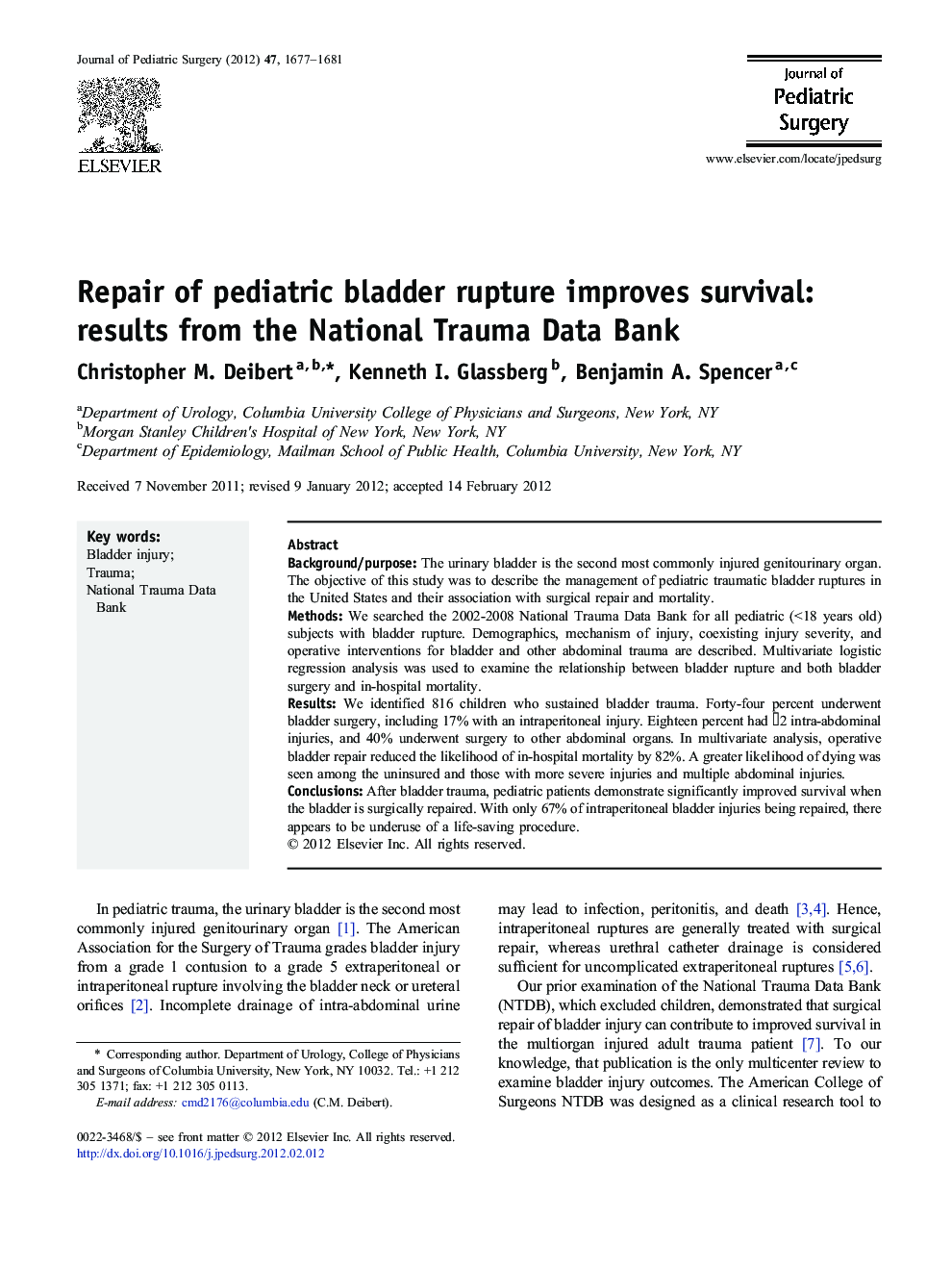| Article ID | Journal | Published Year | Pages | File Type |
|---|---|---|---|---|
| 6217755 | Journal of Pediatric Surgery | 2012 | 5 Pages |
Background/purposeThe urinary bladder is the second most commonly injured genitourinary organ. The objective of this study was to describe the management of pediatric traumatic bladder ruptures in the United States and their association with surgical repair and mortality.MethodsWe searched the 2002-2008 National Trauma Data Bank for all pediatric (<18 years old) subjects with bladder rupture. Demographics, mechanism of injury, coexisting injury severity, and operative interventions for bladder and other abdominal trauma are described. Multivariate logistic regression analysis was used to examine the relationship between bladder rupture and both bladder surgery and in-hospital mortality.ResultsWe identified 816 children who sustained bladder trauma. Forty-four percent underwent bladder surgery, including 17% with an intraperitoneal injury. Eighteen percent had ï³2 intra-abdominal injuries, and 40% underwent surgery to other abdominal organs. In multivariate analysis, operative bladder repair reduced the likelihood of in-hospital mortality by 82%. A greater likelihood of dying was seen among the uninsured and those with more severe injuries and multiple abdominal injuries.ConclusionsAfter bladder trauma, pediatric patients demonstrate significantly improved survival when the bladder is surgically repaired. With only 67% of intraperitoneal bladder injuries being repaired, there appears to be underuse of a life-saving procedure.
